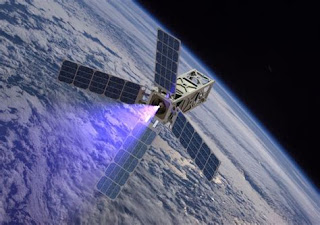Future Rocket Propulsion System
Tech Toys Hacks: Rocket propulsion is critical for space exploration and space travel, and advancements in rocket propulsion systems have the potential to revolutionize spaceflight. It’s been more than 40 years of spaceflights. Now the spacecrafts are more luxurious than before. In recent years, researchers and scientists have been exploring new rocket propulsion technologies that can offer improved performance, efficiency, and safety. Here are some of the next-generation rocket propulsion systems that are currently being developed:
Electric Propulsion Systems: Electric propulsion systems use
electric power to accelerate propellants to produce thrust. These systems are
known for their high fuel efficiency and low operating costs. They are ideal
for long-duration missions, such as deep-space exploration, where conventional
chemical rocket engines are not practical.
One of the most promising electric propulsion systems is the
Hall thruster, which uses magnetic fields to accelerate and ionize the
propellant. These systems can achieve specific impulses (a measure of fuel
efficiency) of up to 10,000 seconds, compared to the 450 seconds of
conventional chemical rockets.
Nuclear Thermal Propulsion: Nuclear thermal propulsion (NTP)
is a type of rocket propulsion that uses nuclear reactors to heat hydrogen and
expel it out of a nozzle to create thrust. NTP offers high specific impulses
and faster travel times, making it ideal for interplanetary missions.
NASA is currently working on the Nuclear Thermal Propulsion
(NTP) project, which aims to develop a next-generation rocket engine that uses
nuclear thermal propulsion. NTP engines have the potential to cut travel times
to Mars from six months to four, making interplanetary travel more practical
and efficient.
Laser Propulsion Systems: Laser propulsion systems use
lasers to heat and accelerate a propellant to generate thrust. These systems
can achieve much higher specific impulses than chemical rockets, making them
ideal for interstellar missions.
One of the most promising laser propulsion systems is the
Breakthrough Starshot project, which aims to use a fleet of tiny spacecraft
called "nanocrafts" to explore other star systems. These spacecraft
will be propelled by a ground-based laser system, which will propel them to
speeds of up to 20% the speed of light.
Solar Sails: Solar sails are a type of spacecraft propulsion
system that uses the pressure of sunlight to propel a spacecraft. These systems
are lightweight and highly efficient, making them ideal for deep-space
missions.
One of the most famous solar sail missions was the Planetary
Society's LightSail 2 mission, which successfully demonstrated the use of solar
sails to propel a spacecraft. The mission showed that solar sails are a viable
and promising technology for future space missions.
In conclusion, next-generation rocket propulsion systems
have the potential to revolutionize space travel and exploration. From electric
propulsion to nuclear thermal propulsion, laser propulsion, and solar sails,
researchers and scientists are exploring new technologies to push the
boundaries of spaceflight. As we continue to develop and refine these
technologies, we will unlock new opportunities for exploration, scientific
discovery, and human expansion into the cosmos.







Comments
Post a Comment
If you any doubts, please let me know.